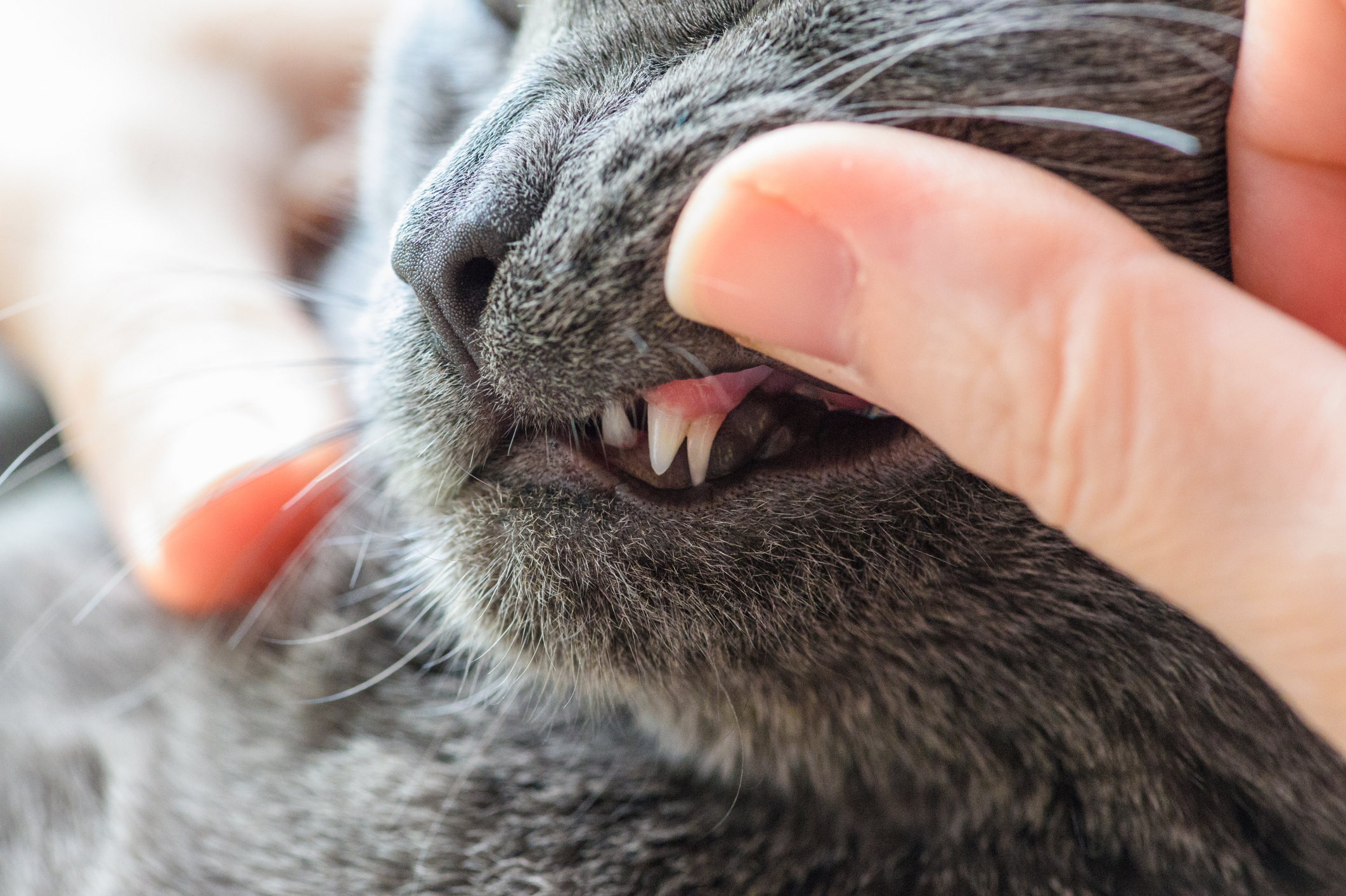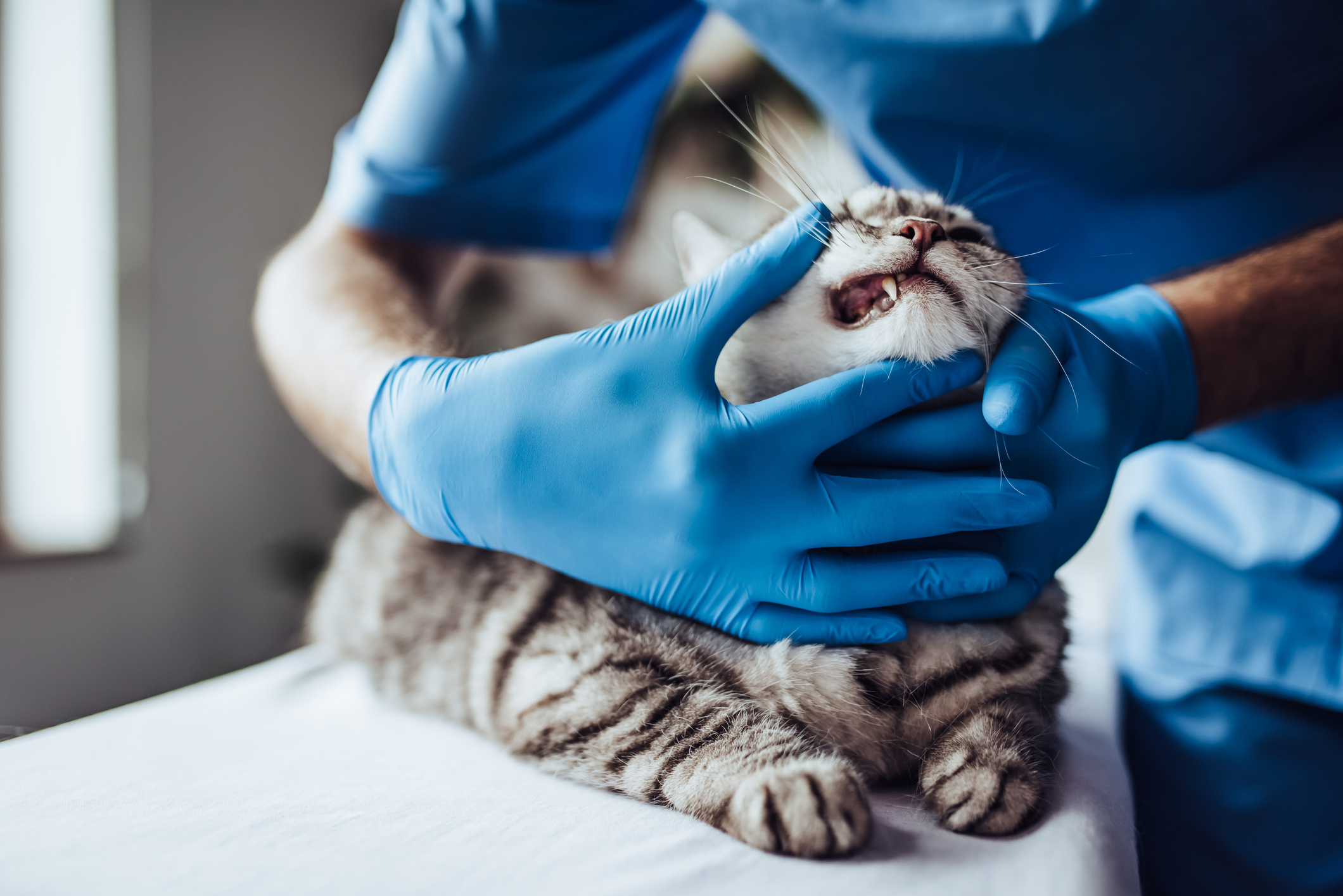
Could That Be Juvenile Gingivitis in Your Kitten?
It’s well known that cats are susceptible to dental health problems like gingivitis and periodontal disease. But in most cases, these issues are found in older cats after years of neglected oral hygiene. This is why it can be so concerning for pet parents to identify signs of gum disease in a young kitten.
One of the most common diagnoses related to gum inflammation in young cats is feline juvenile gingivitis. This severe form of gingivitis can begin as soon as a kitten’s permanent teeth erupt and can ultimately lead to bone loss on some or all of the teeth.
Because of the high stakes associated with juvenile gingivitis in cats, owners must be vigilant about their furry friend’s oral care and routine veterinary visits to spot it as soon as possible.
Understanding gingivitis in kittens
Like in humans, cats are susceptible to gum, or periodontal, disease caused by bacterial buildup in the mouth. Gingivitis is the early stage of periodontal disease and is often reversible with adequate dental care. If left untreated, standard gingivitis can progress into more severe periodontitis.
Unfortunately, in kittens, gingivitis acts a little differently. Feline juvenile gingivitis still presents as inflammation and redness in the gums. However, experts aren’t sure why the condition occurs so strongly after such a short period of bacterial growth in some cats.
It is believed that genetic factors and immune hypersensitivity both play a role in the immune system reacting strongly to bacterial film on a kitten’s teeth. This overreaction first leads to the gingiva (gum tissue) becoming inflamed and sensitive and, later, eroded.
Untreated juvenile gingivitis can lead to juvenile periodontitis. In this case, pockets between the gums and teeth may form, providing more space for bacteria to accumulate near the bone. With this additional buildup, the immune system goes into overdrive, attacking the teeth and gums and causing bone loss.
The rapid degeneration of the teeth and gums on a kitten’s newly erupted teeth can lead to loose teeth and tooth resorption. Often, tooth extraction is the best course of action for damaged teeth. If the condition is left unchecked, the kitten may end up needing their teeth removed at a much younger age than the traditional periodontitis patient.
Identifying juvenile gingivitis

The signs of feline juvenile gingivitis closely mirror those of gingivitis in adult cats:
- Red, inflamed gums
- Bleeding of the gums
- Painful gums that may make your kitten unwilling to eat
- Bad breath
However, one of the problems with feline juvenile gingivitis is its early onset, often occurring when the kitten is six to 12 months old. A kitten’s milk (baby) teeth begin to fall out around four months of age, and their permanent teeth may not fully be in place until the they are six or seven months old. Common signs of teething include red, swollen gums and pain while eating.
Because of the timing surrounding permanent tooth eruption, the redness and gum irritation caused by gingivitis might be mistaken for teething symptoms if the owner has not paid close attention to the kitten’s tooth loss. Additionally, kittens may not be seen by their vet until around 14 months of age for their annual visit. This often allows symptoms to go unchecked for longer, resulting in uninterrupted gum and bone loss.
Managing your kitten’s juvenile gingivitis
In the past, limited understanding of feline juvenile gingivitis often led to the complete extraction of a kitten’s teeth to remove the potential for pain, tooth loss and resorptive lesions. However, newer research suggests that proper management of the disease until the cat reaches the age of two may improve their chances of gingivitis recovery. The goals of juvenile gingivitis management are to keep the teeth as free of bacteria as possible and to support the immune system.
This is not to say that managing your kitten’s gingivitis for the first two years will be easy. A strict dental hygiene regimen will need to be followed at home, and more frequent dental cleanings may be necessary in order to keep your kitten’s teeth healthy. Because cats must be placed under anesthesia for dental scaling and polishing, management of this disease can be time-consuming and expensive. Your vet will likely recommend more frequent check-ups to monitor your kitten’s oral hygiene and will let you know if your cat will require in-office dental work.

However, there are a number of things you should do at home to protect your kitten’s teeth, as well:
- Brush your kitten’s teeth once a day with an ultra-soft bristled toothbrush. Your vet may also recommend a special pet-friendly toothpaste to fight bacteria.
- Switch your cat to a prescription dental diet. These diets are formulated to remove debris from the teeth as your kitten eats, so bacteria do not linger and form plaque as easily.
- Use a prescription oral rinse formulated for dental support on your cat’s teeth daily.
- Apply specialized gels, such as a TetraDecanol-Complex, to the gums to support the immune system and periodontal health.
- Add an immune-support supplement to your pet’s daily routine.
Your vet can help you determine the right steps for at-home care for your kitten, based on their age and disease severity.
There is no guarantee that a kitten’s juvenile gingivitis will completely resolve by the age of two. However, by taking action against the disease as early as possible, you can help reduce gum and tooth pain for your kitten and help them retain as many of their teeth as possible.


